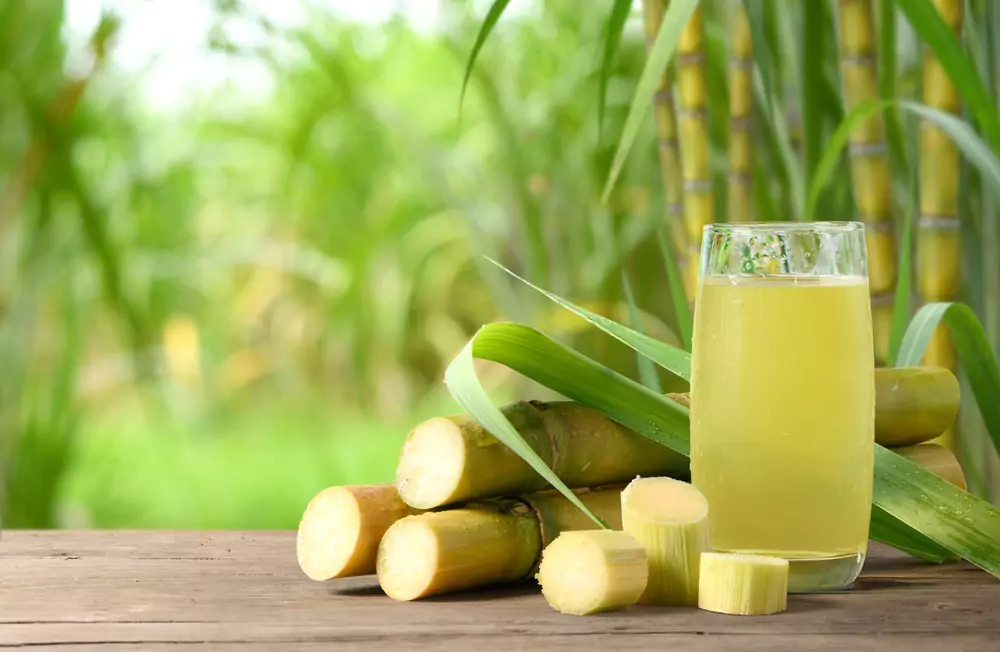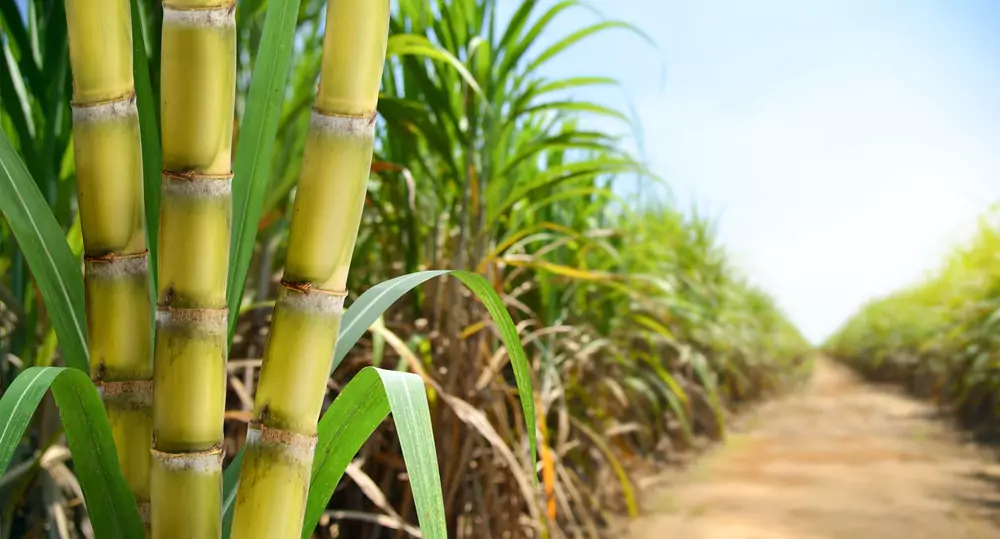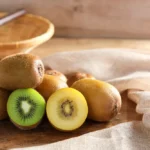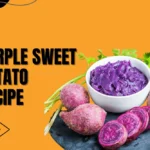Have you ever wondered, “Is sugarcane a fruit”? This intriguing question has sparked numerous debates among curious minds. In this blog post, we will delve into the depths of botany to uncover the truth behind the classification of sugarcane. Is sugarcane truly a fruit, or does it belong to a different category altogether? Let’s explore the fascinating world of sugarcane and its botanical classification to shed light on this sweet puzzle.
What Is Sugarcane?
A member of the Poaceae family, sugarcane is a tall perennial grass. The plant’s stalks are harvested for their high sugar content, which is why it is grown. The tropical sugarcane is widely farmed in Brazil, India, China, Thailand, and Australia. Up to 6 meters tall, the plant has thick, fibrous stalks high in sucrose.
Sugarcane – Nutritional Info
| Nutrient | Amount per 100g |
| Calories | 270 |
| Carbohydrates | 70g |
| Fiber | 0g |
| Protein | 0.4g |
| Fat | 0.2g |
| Vitamin C | 22mg |
| Calcium | 16mg |
| Iron | 0.9mg |
| Potassium | 194mg |
| Magnesium | 3mg |
Is Sugarcane A Fruit, Vegetable, Or Grass?
Sugarcane is a form of grass rather than a fruit or vegetable. It is a member of the same family as other cereal crops, including wheat, rice, and maize, known as the Poaceae. Sugarcane is distinguished by its long stalks, rich in the sugar-making ingredient sucrose.

Due to its sweet flavor and look, it can be mistaken for a fruit or vegetable. However, it doesn’t fit the bill for any of these classifications. In tropical and subtropical areas worldwide, sugarcane is commonly farmed for its sugar content.
Is Sugarcane Juice A Fruit Juice?
Juice from sugarcane is not fruit juice. It is the liquid that has been extracted from the grass-like sugarcane plant. Fruit juices are made from fruit, whereas sugarcane juice is made by pressing or crushing the plant’s stalks.
It is a widely consumed beverage renowned for its sweet and refreshing flavor. Juice from sugarcane is a healthy option since it contains nutrients, including minerals, carbs, and antioxidants. It is crucial to remember that it is not categorized as fruit juice.
Does Sugarcane Meet The Criteria To Be Classified As A Fruit?
No, sugarcane doesn’t fit the bill for being called a fruit. The Poaceae family of grasses includes sugarcane. It is distinguished by its long stalks, rich in the sugar-producing compound sucrose. In contrast to fruits, sugarcane does not grow from a blooming plant’s ovary or have seeds.
Instead, it grows new plants from cuttings of the stalks, a process known as vegetative propagation. Sugarcane is not regarded as a fruit due to its botanical classification and reproductive traits.
Does The Sugarcane Plant Flower?
Yes, the sugarcane plant does flower. Sugarcane belongs to the grass family, and like other grasses, it undergoes a reproductive process that involves flowering.
However, it is essential to note that sugarcane plants are primarily cultivated for their stalks, which contain high levels of sucrose used for sugar production.
Therefore, commercial sugarcane cultivation focuses on maximizing stalk growth rather than allowing the plants to reach full maturity and produce flowers and seeds.
How Does Sugarcane Differ From Other Fruits And Vegetables?
Here, we will explore how sugarcane differs from other fruits and vegetables.

Botanical Classification
Sugarcane is classified as a grass, specifically a member of the Poaceae family. Unlike fruits and vegetables, which encompass a wide range of plant species from various families, sugarcane is unique in its classification as a grass.
Growth Habit and Structure
Sugarcane grows in tall stalks or canes, reaching heights up to 20 feet (6 meters). These canes comprise multiple internodes, the segments between the nodes or joints. Each internode contains fibrous tissue and sucrose-rich juice.
In contrast, fruits and vegetables exhibit diverse growth habits and structures. Fruits typically develop from the ovaries of flowering plants and contain seeds, while vegetables encompass various edible plant parts such as leaves (lettuce), roots (carrots), stems (celery), or flowers (broccoli).
Nutritional Composition
Sugarcane primarily consists of water, carbohydrates (mainly sucrose), fiber, and small amounts of minerals like calcium, magnesium, and potassium. It is relatively low in vitamins and does not provide significant amounts of protein or fat.
Fruits and vegetables, on the other hand, exhibit greater nutritional diversity. They are rich sources of essential vitamins, minerals, dietary fiber, antioxidants, and phytochemicals. Fruits are mainly known for their high vitamin C content, while vegetables are often abundant in vitamins A, K, and folate.
Culinary Uses
Sugarcane is primarily cultivated for its sugar content, which is extracted through various processes to produce sugar, molasses, and other sweeteners. The stalks can also be chewed directly to remove the sweet juice or used as a flavoring ingredient in beverages and desserts.
In contrast, fruits and vegetables have a wide range of culinary uses. They can be consumed fresh, cooked, juiced, or processed into various food products such as jams, sauces, soups, and salads. Fruits are commonly enjoyed as snacks or desserts, while vegetables are often incorporated into savory dishes.
Economic Importance
Sugarcane holds significant economic importance due to its high sugar yield and versatility in industrial applications. It is an important cash crop cultivated in many countries for commercial production of sugar, ethanol (biofuel), and other byproducts. The sugarcane industry contributes to employment generation and economic growth in many regions.
While fruits and vegetables also have economic value as agricultural commodities, their significance extends beyond sugar production. They are crucial in global food security, nutrition, and culinary traditions.
Characteristics Of Sugarcane That Support Its Classification As A Fruit
Sugarcane is a tall perennial grass belonging to the Saccharum genus in the Poaceae family. While it is commonly known for its use in sugar production, sugarcane also has specific characteristics supporting its classification as a fruit.
Botanical Definition:
From a botanical perspective, fruits are defined as the mature ovaries of flowering plants that contain seeds. Sugarcane fits this definition as it develops from the ovary of the sugarcane flower. The sugarcane flowers are small and inconspicuous, arranged in spikelets on a dense inflorescence called a panicle. Each spikelet contains male and female flowers, with the female flowers developing into fruits.
Seed Production:
Another characteristic that supports sugarcane’s classification as a fruit is its ability to produce viable seeds. While sugarcane is primarily propagated through vegetative means such as stem cuttings, it can produce seeds under certain conditions. However, commercial sugarcane varieties are often sterile or have reduced fertility due to extensive breeding for desirable traits like high sugar content.
Fruit-Like Structure:
Sugarcane exhibits some structural similarities to typical fruits. The mature sugarcane stalks have multiple segments or internodes analogous to individual fruit units or fused carpels. Each internode contains a central pith surrounded by fibrous tissue and a tough outer rind. The edible part of sugarcane is the juicy flesh in these internodes, which can be consumed by biting or juicing.
Botanical Classification Of Sugarcane
Kingdom – Plantae, Order – Poales, Family – Poaceae, Subfamily – Panicoideae, Tribe – Andropogoneae, Genus – Saccharum, Species – Saccharum officinarum are the botanical classifications for sugarcane. The genus Saccharum is used to classify sugarcane, a member of the grass family Poaceae. Sugarcane is ranked as the Saccharum officinarum species. This categorization is based on the plant’s traits, morphology, anatomy, and genetic composition.
Conclusion
In conclusion, sugarcane is not classified as a fruit but a type of grass. Despite its sweet taste and fibrous texture, sugarcane does not meet the botanical definition of a fruit. Fruits are typically derived from the ovaries of flowering plants and contain seeds. Sugarcane, on the other hand, is a perennial grass belonging to the Poaceae family. It is cultivated primarily for its high sugar content, extracted, and used in various industries. While sugarcane may share some similarities with fruits regarding taste and appearance, its botanical classification sets it apart from actual fruits.
FAQs
Is Sugarcane a A Fruit?
No, sugarcane is not a fruit. It is a type of giant grass (Poaceae family) grown for its juice, which is extracted and processed to produce sugar and other products.
What Food Group Is Sugarcane?
Sugarcane is a member of the grain group, precisely a type of starchy root vegetable. It is often classified as a staple crop, along with other grains like wheat, rice, and corn.
Is Sugarcane A Grass?
Yes, sugarcane is a type of grass. It is a perennial grass that grows up to 3-6 meters (10-20 feet) tall and has a thick, fibrous root system.
How Healthy Is Sugar Cane?
Sugarcane is a nutrient-rich crop that provides several health benefits. It is a good source of fiber, vitamins, and minerals, including potassium, magnesium, and iron.






